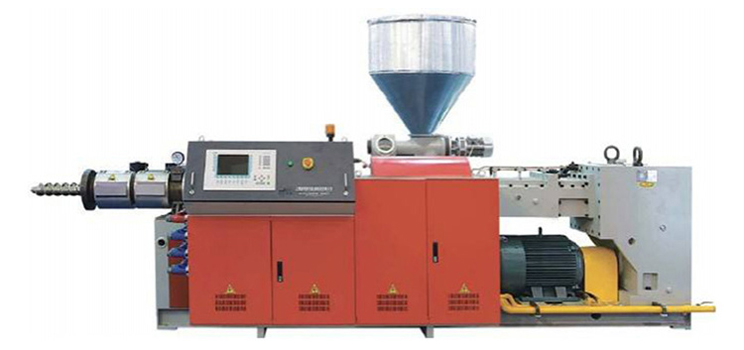Copyright © Shanghai Omega Machinery Co., Ltd. All rights reserved.
How do twin screw extruders work?
Oct 27,2023
Feeding: Raw materials, such as plastic pellets or food ingredients, are typically fed into the extruder through a hopper.
Conveying: The two screws, often referred to as the "co-rotating" or "counter-rotating" screws, rotate in the barrel. As they rotate, they convey the material forward through the extruder. The screws' design and configuration determine the material flow and residence time.
Mixing: Twin screw extruders are excellent at mixing various components. The screws' intermeshing design ensures that materials are continuously mixed and distributed evenly. This is particularly important in applications where uniform mixing is crucial, such as in plastic compounding and food production.
Shearing and Heating: As the material progresses down the screws, it experiences mechanical shearing and friction, which generate heat. The extruder may also have external heaters to further raise the temperature if needed. This combination of mechanical and thermal energy melts the material or enhances chemical reactions, depending on the application.
Pressure Buildup: The narrowing of the barrel or the presence of restrictive elements can increase the pressure within the extruder. This is necessary for certain applications, such as forcing molten plastic through a die to form a specific shape.
Cooling and Venting (optional): Some twin screw extruders have cooling zones or vents to control temperature and remove any volatile components from the material, which is essential for processing certain materials or avoiding degradation.
Cutting or Sizing (if necessary): Depending on the application, the extruded material may be cut or sized to the desired length or shape. This is common in processes like plastic pelletizing or snack production.
Cooling and Solidifying (if necessary): After exiting the die, the extruded material may be cooled to solidify it. This is especially important in plastics processing, where the material needs to maintain its shape and dimensions.
Collection or Packaging: The final product is collected, packaged, or further processed as needed for the specific application.
Twin screw extruders are versatile machines that can be customized with different screw configurations, barrel designs, and accessories to meet the specific requirements of various industries and applications. They offer precise control over material processing and are widely used in manufacturing a wide range of products.
Prev News Next News
- Information
- How should one select the molding equipment when generating PP water supply pipes?
- Why do the surfaces of extruded profiles have weld marks when extruding? What are the solutions to eliminate these marks?
- Why do large, dull and unreflective bubbles appear on the surface of the special profiles? How can this problem be solved?
- What causes the uneven surface and poor gloss of the sheet during the sheet extrusion process? How can it be solved?
- Why does the cooling process for profile extrusion become unbalanced?
- What countermeasures can be taken to improve the dimensional and positional accuracy of profiles during the profile production process?
- How should profile molds be cleaned and maintained?
- What are the corresponding solutions to the phenomenon of grooves and pits on the surface of profiles?
- How should the raw materials be selected in the formula for PVC surface skin core layer microcellular foamed extruded profiles?
- How should the production process of biaxially oriented polyethylene terephthalate (BOPET) film be controlled?
- Contact Us

-
Shanghai Omega Machinery Co., Ltd.
Add.: No.168 Hualian Road, Putuo District, Shanghai City
Contact: Nina
Tel.: +86-021-69921527
Mobile: +86-15021464410
Fax: +86-021-69921567
E-mail: omegajessica@163.com;965425705@qq.com
WeChat No.: 1131449532
Whatsapp: +86 159 0054 6558

-
